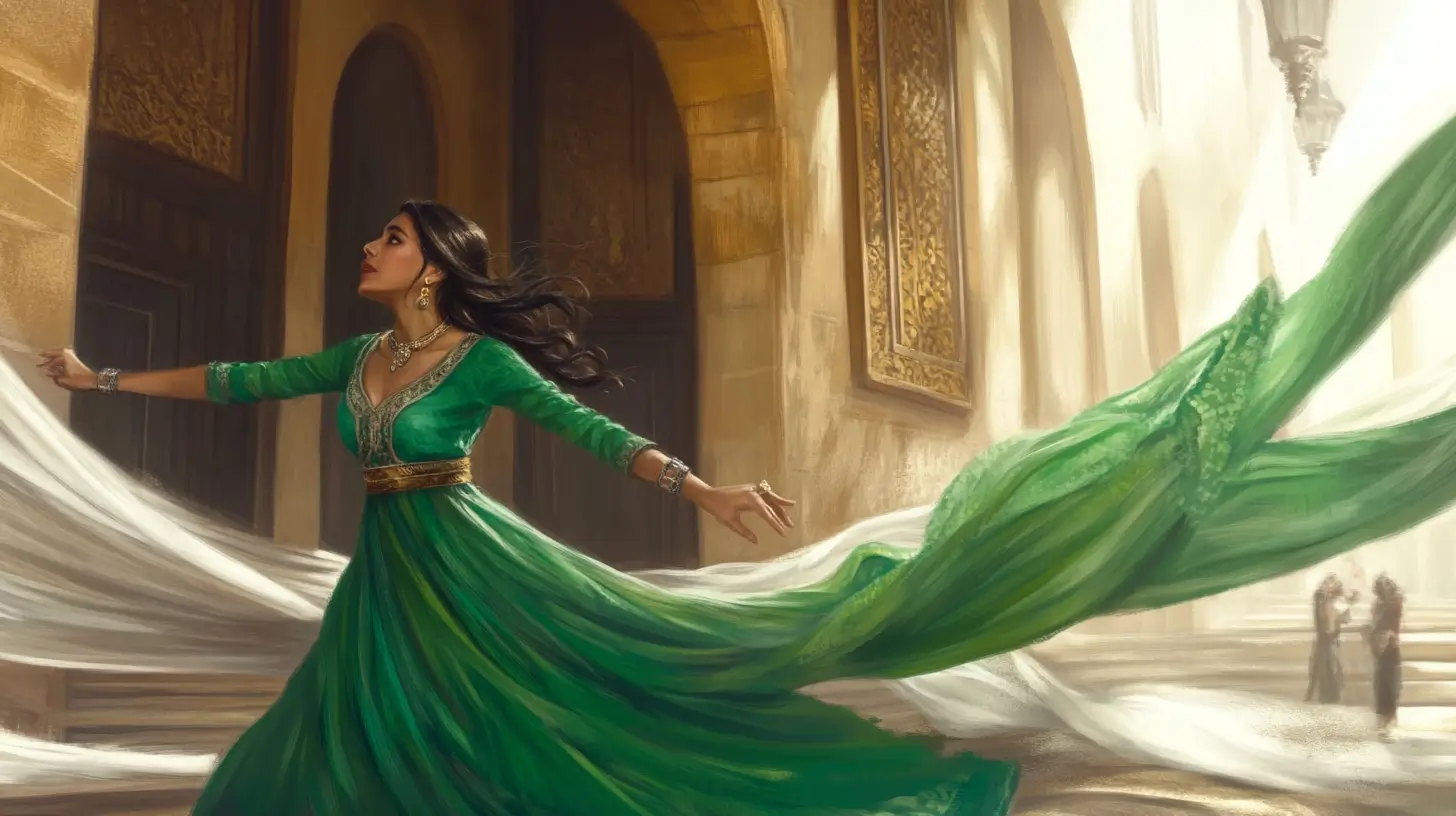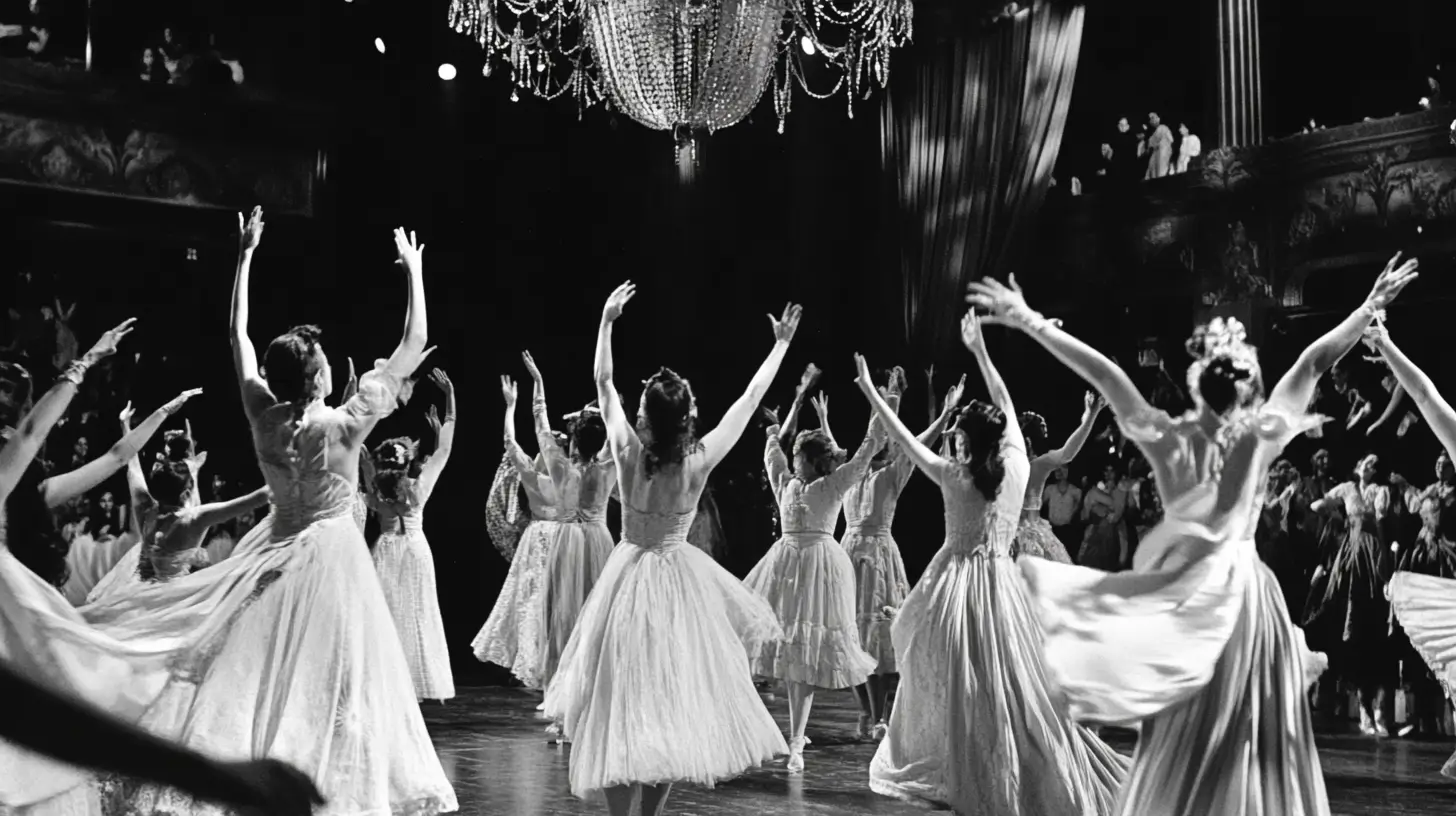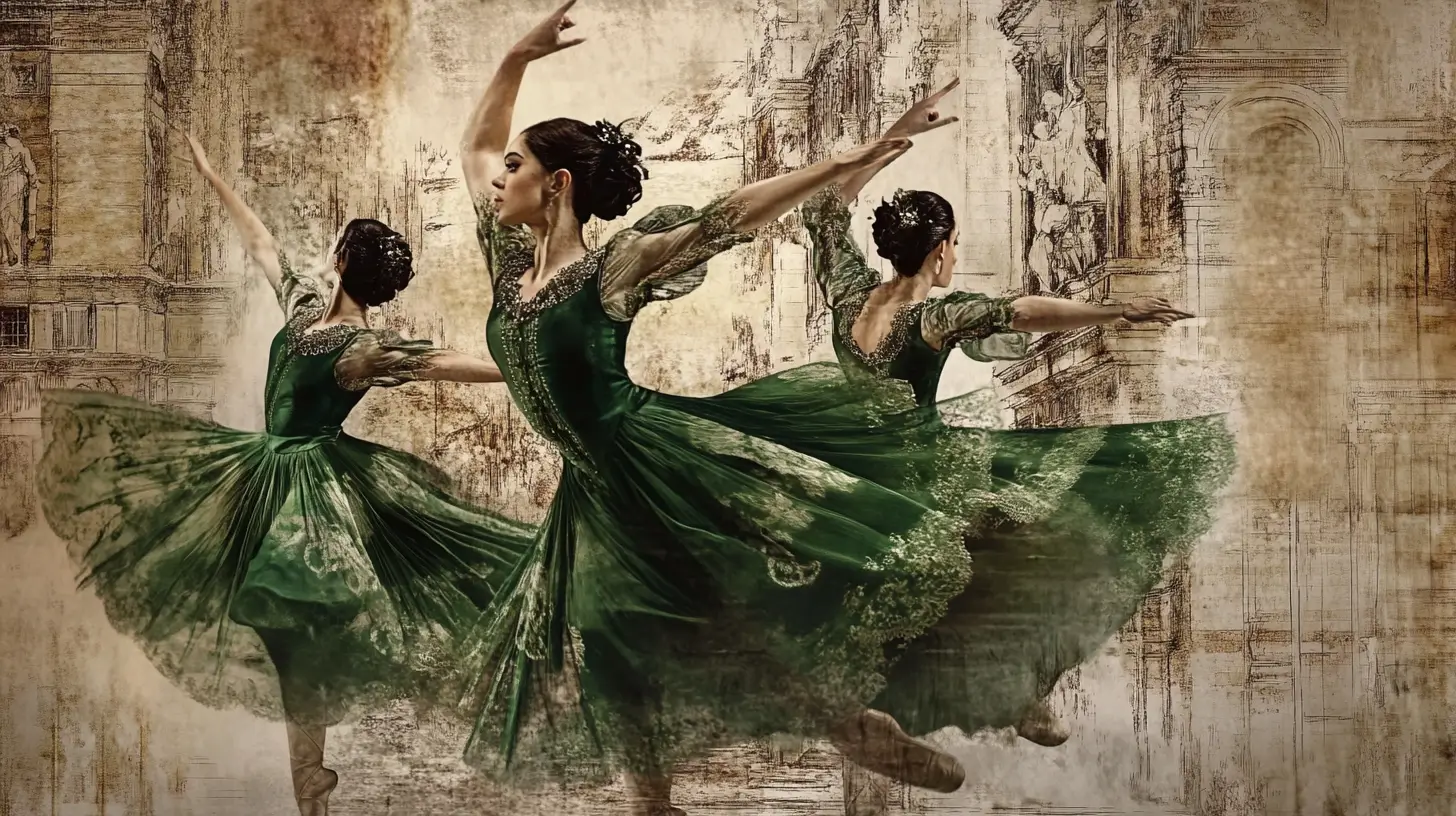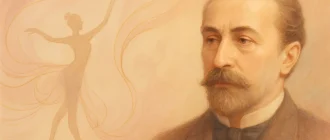The master Jules Perrot created the 1844 ballet La Esmeralda, based on Victor Hugo’s novel Notre Dame de Paris. This article covers its origins, key characters, dance variations, cultural impact, famous performances, and modern adaptations.
Key Takeaways
- La Esmeralda premiered in 1844. Its tragic narrative and significant characters mark it, reflecting love and social injustice themes.
- The ballet has undergone multiple revivals, with notable interpretations by legendary ballerinas, contributing to its lasting legacy and relevance in classical and contemporary ballet.
- Cesare Pugni’s emotional music and intricate choreography enhance the storytelling in La Esmeralda, making them vital to its artistic impact and cultural significance.
| Feature | Description |
|---|---|
| Title | La Esmeralda |
| Premiered | March 9, 1844 |
| Choreographer | Jules Perrot |
| Composer | Cesare Pugni |
| Libretto | Jules Perrot, based on Victor Hugo’s novel Notre-Dame de Paris |
| Original Venue | Her Majesty’s Theatre, London |
| Main Characters | – Esmeralda (Gypsy Dancer) |
| – Quasimodo (Hunchback) | |
| – Phoebus (Captain) | |
| – Frollo (Archdeacon) | |
| – Gringoire (Poet) | |
| Plot Summary | La Esmeralda revolves around the gypsy dancer, Esmeralda, her love interest Phoebus, and the tragic obsession of Frollo, leading to dramatic conflict. |
| Notable Pas de Deux/Variations | – Esmeralda’s Tambourine Variation |
| – Diana and Acteon Pas de Deux (often performed in galas and competitions) | |
| Famous Performers | – Natalia Osipova (Esmeralda) |
| – Svetlana Zakharova (Esmeralda) | |
| – Vadim Muntagirov (Phoebus) | |
| Style of Dance | Romantic Ballet |
| Costuming | Colorful gypsy costumes for Esmeralda and ensemble; elaborate 15th-century-inspired costumes for aristocracy and clergy. |
| Legacy | La Esmeralda remains popular for its excerpts, particularly its variations and the Diana and Acteon Pas de Deux, performed worldwide. |
| Modern Productions | Due to its technical and expressive demands, various companies include La Esmeralda excerpts in gala performances and ballet competitions. |
The Origins of La Esmeralda

La Esmeralda’s creation story mirrors the drama of the ballet itself. Initially, Jules Perrot hesitated to adapt Victor Hugo’s complex narrative, fearing the novel’s depth might be too challenging for a ballet. However, with Benjamin Lumley’s persuasion, Jules Perrot embarked on this ambitious project, collaborating with composer Cesare Pugni to create a stirring score that would complement the story’s emotional weight.
The production faced numerous challenges, including delays due to Jules Perrot’s injury and the unavailability of a lead dancer, but these obstacles only added to the anticipation surrounding its debut.
La Esmeralda premiered at Her Majesty’s Theatre in London on March 9, 1844. Its tragic ending remained true to Hugo’s love and social injustice themes. The ballet’s powerful narrative and themes resonated deeply with audiences, making it a significant cultural artifact. Its Saint Petersburg premiere on January 2, 1849, with the acclaimed ballerina Fanny Elssler, further cemented its place in ballet history.
Key Characters in La Esmeralda

Characters in La Esmeralda are as vivid and complex as its narrative. Esmeralda is at the heart of the ballet, a Romani girl whose generous spirit leads her to marry the poet Pierre Gringoire to save him from execution. Her beauty and kindness earn the love and obsession of several key figures, driving the story’s dramatic tension.
Claude Frollo, the archdeacon, becomes dangerously obsessed with Esmeralda, leading to tragic consequences. This obsession is vividly expressed in the choreography, where Frollo watches Esmeralda with a sinister intensity.
Phoebus de Chateaupers, the handsome captain, saves the day for Esmeralda and her friends and later falls in love with her, adding another layer to the intricate web of relationships. Meanwhile, Quasimodo, Frollo’s deformed henchman, is deeply moved by Esmeralda’s kindness and ultimately becomes her defender, embodying inner beauty and redemption themes.
The dramatic marriage scene between Esmeralda and Gringoire is central to the ballet’s narrative. It highlights her strength and agency, as well as the role of the beloved Phoebus.
Modern performances of La Esmeralda have increasingly emphasized Esmeralda’s strength and autonomy, aligning with contemporary narratives of female empowerment. This shift makes the character more relatable to modern-day audiences and adds depth to her portrayal, making her story even more compelling.
Notable Variations: Pas de Deux and Pas de Cinq
Among the many highlights of La Esmeralda are its notable dance variations, particularly the pas de deux and la Esmeralda pas de cinq. The la esmeralda pas de. The pas de deux is a frequently performed piece often showcased in ballet competitions, allowing dancers to display their technical prowess and emotional expressiveness.
This variation remains one of the most beloved components of the ballet, captivating audiences with its intricate choreography and emotional depth, especially in the Esmeralda pas de deux.
On the other hand, the pas de cinq enriches the narrative by showcasing ensemble choreography and the interactions between characters. Historically, it has served as a powerful display of storytelling virtuosity and emotional engagement, enhancing the overall impact of the ballet.
These variations highlight the dancers’ skills and contribute significantly to the ballet’s enduring appeal.
Famous Performances and Revivals

La Esmeralda has enjoyed numerous revivals and notable performances over the years, each bringing new life to and reviving this classic ballet. Marius Petipa’s first revival premiered on December 29, 1886, at the Imperial Mariinsky Theatre, marking a significant moment in the ballet’s history.
His final resurgence in 1899, featuring Matilda Kschessinskaya in the title role, further solidified and revived the ballet’s place in the repertoire. Agrippina Vaganova’s 1935 revival introduced new choreography that became the standard for future performances, showcasing her innovative approach to the imperial ballet.
Prestigious companies like the Bolshoi Ballet and the Royal Ballet have introduced La Esmeralda to new audiences through modern revivals, ensuring its contemporary relevance. These performances often include fresh interpretations while preserving the essence of the original, demonstrating the ballet’s timeless appeal.
The Music of La Esmeralda
Cesare Pugni’s music for La Esmeralda is integral to its storytelling and is noted for its emotional richness and dramatic intensity. Pugni’s melodic lines complement the characters’ emotional arcs, creating a cohesive and immersive experience for the audience. Jules Perrot’s innovative choreography, designed to work with Pugni’s music, further enhances the ballet’s emotional impact.
Over the years, the score has been revised multiple times to adapt to various interpretations of the ballet. Famous orchestras like the Bolshoi Ballet Orchestra have recorded Pugni’s score, helping to maintain its popularity across generations. These recordings ensure that the music of the opera La Esmeralda continues to captivate audiences worldwide every day.
Costumes and Set Design

Costumes and set design are crucial in bringing La Esmeralda to life on stage. The elaborate costumes enhance the visual storytelling and convey the characters’ emotions and social status. Designed to reflect the historical and cultural context of the story, these costumes immerse the audience in the world of 15th-century Paris.
The set designs are equally elaborate, often featuring backdrops that evoke the architecture and atmosphere of the time. Modern productions have also utilized innovative lighting techniques to create dynamic and atmospheric effects, complementing the choreography and enhancing the overall visual experience.
La Esmeralda in Russian Ballet

La Esmeralda found a permanent place in Russian ballet after its initial staging in Saint Petersburg in 1848. The ballet was first performed in Russia in 1849 under the direction of Fanny Elssler, with Marius Petipa assisting in staging the production. Petipa’s influence was instrumental in adapting La Esmeralda for Russian audiences, incorporating his signature choreography style.
The opera’s original one-act structure was expanded to three acts to meet Russian audience expectations, marking the ballet’s definitive version in the Russian repertoire. Various ballet companies in Russia continue to stage La Esmeralda, preserving its classical roots while incorporating innovative choreography that appeals to modern spectators.
Iconic Ballerinas in the Title Role
Several iconic ballerinas have interpreted the title role of Esmeralda, each bringing their unique touch to the character.
- Carlotta Grisi was the first to portray Esmeralda, setting a high standard for future performances.
- Fanny Cerrito’s portrayal was equally captivating, and she is known for her expressive dancing and emotional depth.
- Virginia Zucchi’s performance in the 1886 revival was legendary, making her portrayal of Esmeralda a landmark in Russian ballet.
Matilda Kschessinskaya’s interpretation of Esmeralda in 1899 showcased her dramatic and technical abilities, further cementing the role’s significance in ballet history. Olga Spessivtseva’s debut as Esmeralda in 1918 was regarded as exceptionally powerful, contributing to her reputation as a leading ballerina. She used a real goat named Djali Kschessinskaya during her performances, adding a unique element to the role.
Fanny Cerrito and Zucchi’s performances have left lasting legacies, influencing how the role of Esmeralda is perceived and how ballerina is performed today. These ballerinas brought the character to life and showcased the emotional expressiveness and technical prowess required for the role.
Modern Interpretations and Stagings
Modern interpretations of La Esmeralda have ensured its continued relevance and appeal. Over time, choreographers have adapted the pas de deux and pas de cinq, maintaining their importance in the ballet’s legacy through various revivals. These adaptations showcase the versatility of the ballet and its characters, blending traditional and newly created choreography.
Contemporary productions often adapt the tragic elements of Esmeralda’s story, sometimes opting for a more upbeat interpretation or a modernized storyline to resonate with today’s audiences. Contemporary settings and costume designs honor the ballet’s historical context, making La Esmeralda a timeless and adaptable masterpiece.
Behind the Scenes: Choreography and Rehearsals
La Esmeralda’s choreography draws heavily from classical ballet traditions and integrates storytelling elements from Victor Hugo’s original narrative. Choreographers like Vasily Medvedev and Stanislav Feco have created contemporary versions, including suites of notable ballet pieces, emphasizing tradition and innovation. Such adaptations keep the ballet fresh and relevant while honoring its classical roots.
Rehearsals for La Esmeralda involve a collaborative process in which dancers work closely with choreographers to ensure a cohesive interpretation of the ballet’s themes and movements. This cooperative effort is essential in bringing the story to life, and costume and set designers play a crucial role in harmonizing visual elements with the ballet’s themes of love, fate, death, and social injustice.
Behind-the-scenes efforts in creating La Esmeralda highlight the dedication and artistry of ballet staging. From the intricate choreography and rehearsals to the detailed costumes and set showpiece designs, every production element is meticulously arranged to create a powerful and moving performance.
Cultural Impact and Legacy
La Esmeralda’s influence extends beyond ballet and opera, impacting various forms of media, including films, plays, and literature. Its narrative and characters have been adapted and reimagined countless times, reflecting its enduring popularity and cultural significance.
The ballet has left an indelible mark on popular culture, influencing dance and various aspects of entertainment and storytelling. Its themes of love, social injustice, triumph, death, and redemption resonate with audiences across generations, ensuring that La Esmeralda remains a beloved classic.
Resume
In summary, La Esmeralda is a timeless masterpiece in ballet, blending dramatic storytelling with exquisite choreography and music. From its challenging origins and intricate characters to this day, its notable performances and enduring cultural impact, La Esmeralda continues to captivate audiences worldwide.
Its evolution through various revivals and modern interpretations ensures that this ballet will remain a significant part of the cultural landscape for generations.
Frequently Asked Questions
Who composed the music for La Esmeralda?
Cesare Pugni composed the music for La Esmeralda, which is characterized by its emotional richness and dramatic intensity.
When did La Esmeralda first premiere?
La Esmeralda premiered on March 9, 1844, at Her Majesty’s Theatre in London.
Who are the main characters in La Esmeralda?
The main characters in “La Esmeralda” are Esmeralda, Claude Frollo, Phoebus de Chateaupers, Quasimodo, and Pierre Gringoire. Their intertwined fates drive the narrative forward.
What are the notable dance variations in La Esmeralda?
La Esmeralda features notable dance variations, such as the pas de deux and pas de cinq, highlighting technical proficiency and emotional depth in storytelling.
How has La Esmeralda been adapted in modern productions?
La Esmeralda has been adapted into modern productions, integrating traditional and contemporary choreography, more upbeat interpretations, and updated storylines to appeal to today’s audiences. This approach revitalizes the narrative and enhances its relevance in a modern context.
What inspired Jules Perrot to create “La Esmeralda”?
Jules Perrot drew inspiration from Victor Hugo’s 1831 novel Notre-Dame de Paris, translating the drama of Hugo’s Romani heroine and her struggles into a full-length Romantic ballet.
How does the ballet’s ending differ from Victor Hugo’s original novel?
Unlike Hugo’s novel, where Esmeralda meets a tragic fate, the early versions of the ballet conclude happily, with Quasimodo exposing Frollo and Esmeralda reunited with Phoebus.
Who choreographed the version of “La Esmeralda” most often performed today?
The three-act version revived by Agrippina Vaganova for the Kirov Ballet in 1935 is the foundation for most contemporary full-length stagings.
How did Marius Petipa’s 1886 revival alter the structure of the ballet?
Petipa expanded the work into four acts and added new divertissements—such as the Pas de six for Virginia Zucchi and additional pas de deux, pas de dix, and pas de cinq—enriching both its length and its showcase of virtuosity.
What are the distinctive musical motifs in Cesare Pugni’s score for “La Esmeralda”?
Pugni employs recurring themes—light, lyrical melodies for Esmeralda’s innocence contrasted with dark, brooding motifs for Frollo’s obsession.
Which ballerinas made their mark as Esmeralda in early revivals?
Besides original creator Carlotta Grisi, standout early interpreters included Fanny Elssler in St. Petersburg (1849), Virginia Zucchi (1886), and Mathilde Kschessinskaya (1899), each adding nuanced dramatic and technical flair.
What makes the Tambourine Variation from “La Esmeralda” so memorable?
This solo variation is notable for its spirited rhythmic pulse and the dancer’s precise footwork while manipulating a prop, combining virtuosity with theatrical flair.
When and where did the first Russian production of “La Esmeralda” premiere?
Under Jules Perrot’s direction with revisions by Cesare Pugni, the ballet debuted in Russia on January 2, 1849, at the Imperial Bolshoi Kamenny Theatre in St. Petersburg.
What technical demands does the title role of Esmeralda place on dancers?
The role requires exceptional control—dancers must generate their resistance for high leg extensions, maintain rhythmic precision in solo variations, and convey narrative through expressive gestures.
Are there any filmed or recorded versions of “La Esmeralda” available?
Yes—a DVD reconstruction based on Perrot’s original choreography offers one of the few filmed full-length versions, though it omits later Petipa-added numbers like the Tambourine Variation.
Which excerpts of “La Esmeralda” are most frequently performed today?
Western companies typically present only the La Esmeralda pas de deux and pas de six in galas and competitions, while full productions are clustered in Russia and select U.S. companies.
How have costume designs for “La Esmeralda” evolved since its premiere?
Originally crafted by Madame Copère with 15th-century Parisian accents, later revivals under Petipa and Vaganova enriched fabrics and details, and contemporary productions now blend historical motifs with modern materials and silhouettes.
What role does exotic Romani imagery play in the ballet’s Romantic context?
Esmeralda’s Romani identity embodies the Romantic era’s fascination with the “exotic” and the outsider, lending the ballet its themes of freedom, passion, and social marginalization.
What instrumentation did Cesare Pugni employ in his orchestration?
Pugni scored the ballet for a full mid-19th-century orchestra—strings, woodwinds, brass, and percussion—typical of Romantic ballet scores.
How did “La Esmeralda” influence the development of Romantic ballet?
As one of the last great Romantic ballets, it helped cement narrative pantomime and expressive choreography that persisted into the Second Empire, influencing the evolution of works like Giselle and La Sylphide.
Where can modern audiences see performances of the full-length ballet today?
Full-length stagings are regularly mounted by leading Russian companies such as the Mariinsky and Bolshoi, and have been revived by the New Jersey Ballet (2004) and Russian Ballet Orlando (2021) in the United States.








